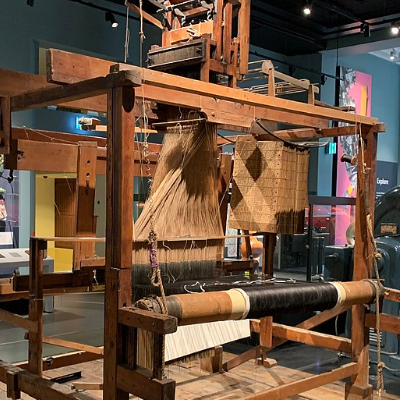Plant-Based Fabrics
Jacquard
- WeatherAll Weather Not In Harsh Winter
- PopularityCommonly available
- ProductionMainly produced in India, China, Australia
- CareDry Clean
- TextureSoft
- UsecasePopular as every-day wear

Description
This fabric stands apart from the crowd of other basic fabrics because of its complex woven patterns that are not dyed, printed, or embroidered on its top. Brocades are the reason behind the origination of Jacquard fabric. There are different types of Jacquard, namely: Brocade, Brocattle, Damask, Matellasse, Jacquard Knit, Cotton, SilkJacquard, Wool Jacquard, and Synthetic Jacquard. The characteristics of the fabric change depending on the material or fiber used to make the fabric. But the common properties include strong, durable, and wrinkle-free. It is used to make drapes, curtains, pillow covers, bedcovers, duvet covers, and also for ornamental dressing.
History of Jacquard
Joseph Marie Jacquard invented the jacquard loom in 1804 but he showcased the concept of his invention in 1801 that even caught Napoleon’s eyes. Napoleon called him to Paris and asked him to finish his invention to serve a national interest.
What inspired Jacquard to bring light to this invention?
- He started as a drawboy (a boy who operates the harness cords of a handloom broadly by standing on the top of the loom). It is a tough job, carrying 30 pounds of weaving reeds at a time. They often used to get crippled because of this profession.
- Before the introduction of the Jacquard loom, hand-operated draw-looms were used to fabricate brocade. By the late 1700s, machinery was developed but brocade creation still needed some sort of artist’s touch because of the involved complexities in its design.
- Jacquard realized that to replace this hand-operated process with a machine-operated one, he needs to develop a technology that will be capable of changing its weaving style as per the desired pattern to be created.
So he invented a loom that ran on cards with holes punched in them. Each card represents one line of a pattern with holes that allow the threads to pass through into the patterns, changing the color, and creating a design. This was the world’s first programmable machine. It also inspired Charles Babbage to create computers. Jacquard’s punch card creation can also be said to be the origin of the binary code system.
When modernization hit Jacquard’s loom, the punch card technique was replaced by computerized programs.
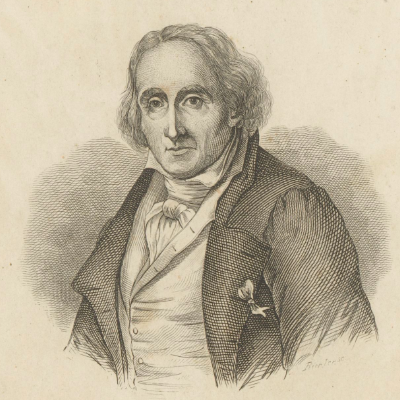
Photos
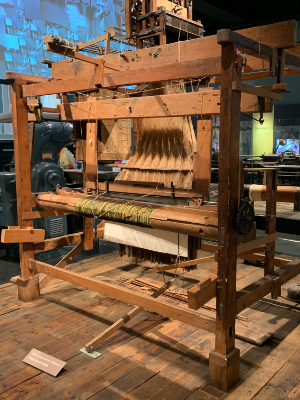
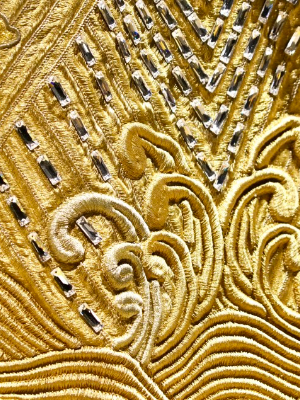
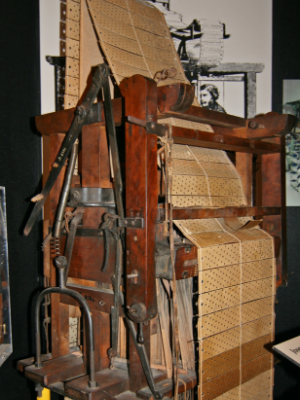
Jacquard is a Plant-Based fabric.
Read more about Plant-Based fabrics like Jute and Hemp.
Process
- Material Acquisition: Jacquard fabric can be made from various textile fibers like wool, cotton, etc. So the process of its creation begins with acquiring those materials.
- Spinning: The acquired fiber is spun into yarns. The yarns can be spun into various levels of thickness. Commonly, manufacturers dye the yarn in favorable colors.
- Pattern Programming: After spinning yarns, programs are chosen by the manufacturer for their Jacquard looms. There are already a lot of different weave patterns available for the computerized Jacquard loom but one can create more as per their creativity.
- Yarn Feeding: Once the program is selected, the loom feeds yarn into the weaving apparatus for the production of the desired pattern.
- Final Treatment: Lastly, the acquired fabric is exposed to chemical substances for enhancing its durability and heat resistance. Some manufacturers even skip this step and just dye their finished fabric.
